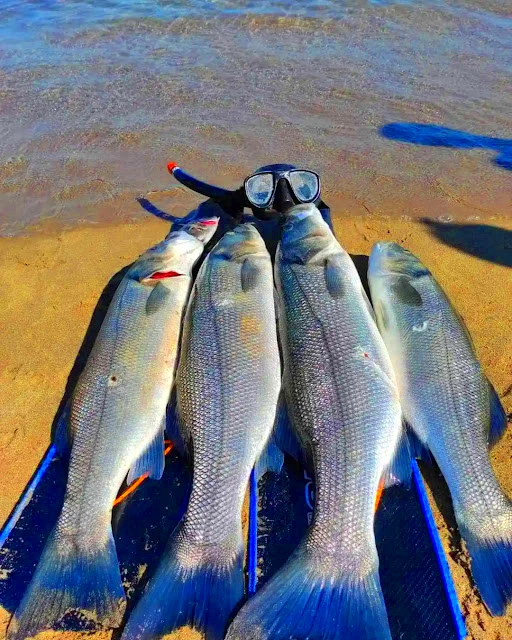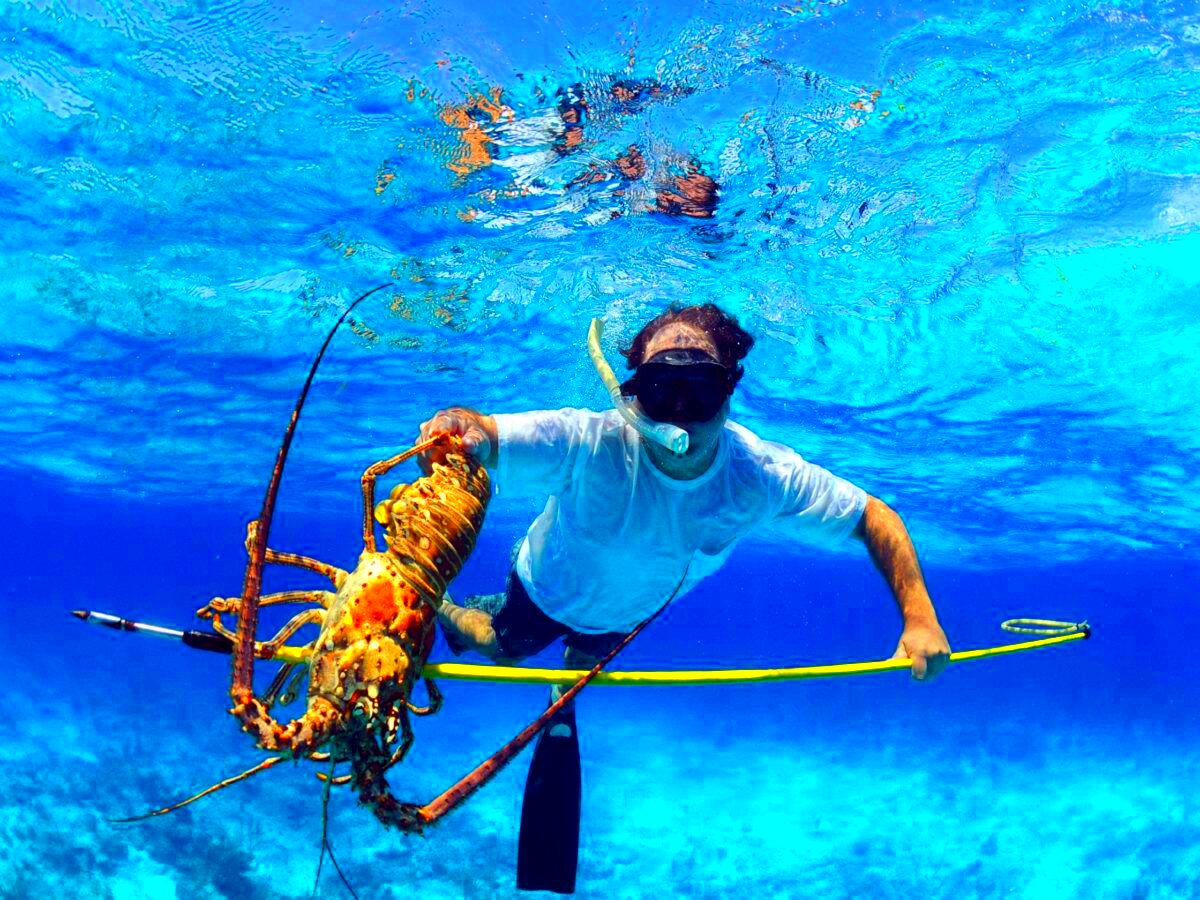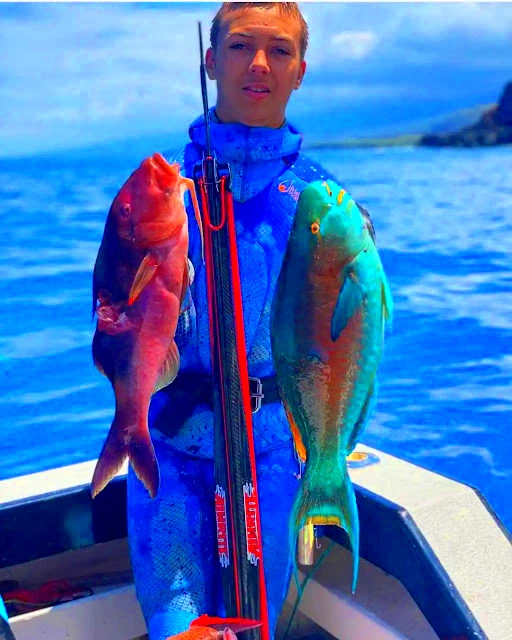California Spearfishing Laws and Safe Practices in the Water
California is a popular destination for spearfishing enthusiasts. With its vast coastline and diverse marine life, it offers a unique underwater experience. However, before diving in, it’s essential to understand the laws and regulations that govern this activity. Knowing these laws not only ensures a fun experience but also helps protect California’s marine resources.
Understanding the Legal Requirements for Spearfishing

Spearfishing in California comes with specific legal requirements to maintain sustainable fishing practices and protect marine life. Here are the key points to consider:
- Location Restrictions: Certain areas may have designated no-fishing zones. Always check local regulations before heading out.
- Species Regulations: Some species may be protected or have specific harvesting rules. Familiarize yourself with what you can and cannot catch.
- Method of Fishing: Use of certain equipment and techniques may be regulated to promote safety and conservation.
- Seasonal Restrictions: There may be specific times of the year when fishing is restricted to protect spawning species.
Permits and Licensing for Spearfishing in California

To legally spearfish in California, obtaining the proper permits and licenses is crucial. Here’s what you need to know:
Fishing License: A valid California fishing license is required for all individuals 16 years and older. This can be purchased online or at various retail locations.
Special Permits: Depending on the location and the type of spearfishing (e.g., scuba diving vs. free diving), additional permits may be needed. Check with the California Department of Fish and Wildlife for specific requirements.
| License Type | Cost | Validity |
|---|---|---|
| Resident Fishing License | $52.66 | 1 Year |
| Non-Resident Fishing License | $142.00 | 1 Year |
| Abalone Report Card | $10.00 | Seasonal |
Remember, fishing without the proper licenses can result in hefty fines. So, always ensure you have the necessary permits before heading out to enjoy the waters!
Protected Species and Size Limits
When spearfishing in California, it’s crucial to know about protected species and size limits to promote sustainability and protect marine ecosystems. The state has established specific guidelines to help ensure that fish populations remain healthy and diverse.
Protected Species: Some fish species are protected under state and federal laws, meaning you cannot catch them at all. Here are a few notable protected species:
- White Abalone
- Yelloweye Rockfish
- California Sheephead
- Various species of sharks, including the Great White Shark
Before you go spearfishing, make sure to check the latest regulations to see if any new species have been added to this list.
Size Limits: In addition to knowing which species are protected, you also need to be aware of size limits for certain fish. Each species has a minimum size that you must adhere to. Catching fish below this size can result in fines. Here are a few examples:
| Species | Minimum Size Limit |
|---|---|
| California Scorpionfish | 10 inches |
| Pacific Rockfish | 12 inches |
| Lingcod | 22 inches |
Always measure your catch and follow these guidelines to ensure you’re fishing responsibly.
Safety Practices for Spearfishing
Safety should always be a priority when spearfishing. The underwater environment can be unpredictable, so taking precautions is essential. Here are some vital safety practices to consider:
- Buddy System: Never go alone. Always have a buddy with you. It’s safer and more enjoyable to share the experience.
- Check Weather Conditions: Before heading out, check the weather and sea conditions. Strong currents or bad weather can make for a dangerous outing.
- Use Proper Gear: Wearing the right wetsuit and fins can improve your safety and comfort in the water.
- Know Your Limits: Don’t push yourself too hard. If you’re tired or not feeling well, it’s best to call it a day.
- Stay Aware of Surroundings: Always be mindful of your environment, including boats, other divers, and marine life.
By following these safety practices, you can help ensure a fun and accident-free spearfishing experience.
Recommended Equipment for Spearfishing
Having the right equipment can make a world of difference in your spearfishing experience. Whether you’re a beginner or an experienced diver, here’s a list of essential gear you should consider:
- Speargun or Pole Spear: Choose one that fits your style. Spearguns are great for longer shots, while pole spears are perfect for close encounters.
- Wetsuit: A wetsuit keeps you warm and protects you from scrapes and stings. Choose a thickness appropriate for the water temperature.
- Fins: Long fins can help you swim efficiently. Make sure they fit well and are comfortable.
- Mask and Snorkel: A good mask provides visibility, while a snorkel allows you to breathe easily at the surface.
- Weight Belt: A weight belt helps you dive more easily. Make sure it’s adjustable and secure.
Here’s a quick comparison table for gear:
| Equipment | Purpose | Price Range |
|---|---|---|
| Speargun | Long-range shooting | $150 – $600 |
| Wetsuit | Warmth and protection | $100 – $300 |
| Mask and Snorkel | Visibility and breathing | $30 – $100 |
Investing in quality equipment can enhance your spearfishing experience and keep you safe while you explore the underwater world.
Environmental Considerations and Conservation Efforts
When it comes to spearfishing, being mindful of the environment is vital. California’s marine ecosystems are diverse and fragile, making conservation efforts essential for sustaining fish populations and habitats. Here are some key environmental considerations and initiatives you should be aware of:
- Catch and Release Practices: Whenever possible, practice catch and release for species that are not meant for consumption or are close to size limits. This helps maintain healthy populations.
- Avoid Overfishing: Adhere to regulations regarding limits on the number and size of fish you can catch. Overfishing can deplete stocks and disrupt the ecosystem.
- Respect Habitats: Be cautious around sensitive areas like reefs and kelp forests. Avoid damaging these habitats while diving.
- Participate in Cleanups: Join local beach and underwater cleanups. Removing trash from the ocean helps protect marine life and keeps the environment clean.
Conservation Initiatives: Various organizations work towards the conservation of California’s marine environments. Supporting these efforts can make a significant difference. Here are a few you might consider:
- California Ocean Protection Council
- Marine Conservation Society
- Local Reef Restoration Projects
By being environmentally conscious and actively participating in conservation efforts, spearfishers can play a significant role in protecting California’s beautiful marine ecosystems.
Frequently Asked Questions About Spearfishing Laws
Curious about spearfishing laws? You’re not alone! Here are some frequently asked questions that can help clarify the rules and regulations around spearfishing in California:
- Do I need a fishing license for spearfishing?
Yes, a valid fishing license is required for anyone aged 16 and older. - Are there any no-fishing zones?
Yes, certain areas are designated as no-fishing zones to protect sensitive marine habitats. Always check local regulations. - What species are protected?
Protected species include white abalone and various rockfish. Catching these species is illegal. - What is the minimum size limit for fish?
Size limits vary by species. It’s crucial to measure your catch before taking it. - Can I spearfish at night?
Night spearfishing is often regulated. Check local laws to ensure compliance.
If you have more questions, it’s always a good idea to consult the California Department of Fish and Wildlife or local spearfishing clubs for up-to-date information.
Conclusion and Key Takeaways
Spearfishing in California can be an exhilarating and rewarding experience, but it comes with responsibilities. Here are some key takeaways to remember:
- Know the Laws: Familiarize yourself with California’s spearfishing laws, including permits, protected species, and size limits.
- Prioritize Safety: Always practice safety measures by diving with a buddy, checking weather conditions, and using the right equipment.
- Be Environmentally Responsible: Respect marine ecosystems by practicing catch and release, avoiding overfishing, and participating in conservation efforts.
- Stay Informed: Keep updated with any changes in regulations and best practices in spearfishing.
By following these guidelines, you can enjoy a successful and sustainable spearfishing adventure while helping to protect California’s unique underwater world. Happy diving!


